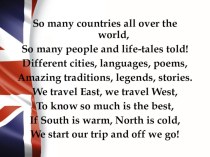- Главная
- Разное
- Бизнес и предпринимательство
- Образование
- Развлечения
- Государство
- Спорт
- Графика
- Культурология
- Еда и кулинария
- Лингвистика
- Религиоведение
- Черчение
- Физкультура
- ИЗО
- Психология
- Социология
- Английский язык
- Астрономия
- Алгебра
- Биология
- География
- Геометрия
- Детские презентации
- Информатика
- История
- Литература
- Маркетинг
- Математика
- Медицина
- Менеджмент
- Музыка
- МХК
- Немецкий язык
- ОБЖ
- Обществознание
- Окружающий мир
- Педагогика
- Русский язык
- Технология
- Физика
- Философия
- Химия
- Шаблоны, картинки для презентаций
- Экология
- Экономика
- Юриспруденция
Что такое findslide.org?
FindSlide.org - это сайт презентаций, докладов, шаблонов в формате PowerPoint.
Обратная связь
Email: Нажмите что бы посмотреть
Презентация на тему Henri Matisse
Содержание
- 2. Henri-Émile-Benoît Matisse was a French artist, known
- 3. Matisse was born in Le Cateau-Cambrésis,
- 4. With the model Caroline Joblau, he had
- 5. Early paintings
- 6. Blue Pot and Lemon (1897)
- 7. Fruit and Coffeepot (1898)
- 8. Vase of Sunflowers (1898)
- 9. Crockery on a Table (1900)
- 10. Fauvism as a style began around 1900
- 11. Selected works: Paris, 1901–1910A Glimpse of Notre-Dame
- 12. The Dance (first version), 1909
- 13. Portrait of Madame Matisse (The green line), 1905Open Window, Collioure, 1905
- 14. La coiffure, 1907, oil on canvasThe Young Sailor II, 1906
- 15. Self-Portrait in a Striped T-shirt 1906
- 16. Around April 1906 he met Pablo Picasso,
- 17. Selected works: Paris, 1910–1917View of Notre-Dame, 1914Auguste Pellerin II, 1916-17, oil on canvas
- 18. French Window at Collioure, 1914Les poissons rouges (Interior with a Goldfish Bowl), 1914, oil on canvas
- 19. The Conversation, 1911
- 20. n 1917 Matisse relocated to Cimiez on
- 21. He and his wife of 41 years
- 22. In 1951 Matisse finished a four-year project
- 23. Скачать презентацию
- 24. Похожие презентации
Henri-Émile-Benoît Matisse was a French artist, known for his use of colour and his fluid and original draughtsmanship. He was a draughtsman, printmaker, and sculptor, but is known primarily as a painter.
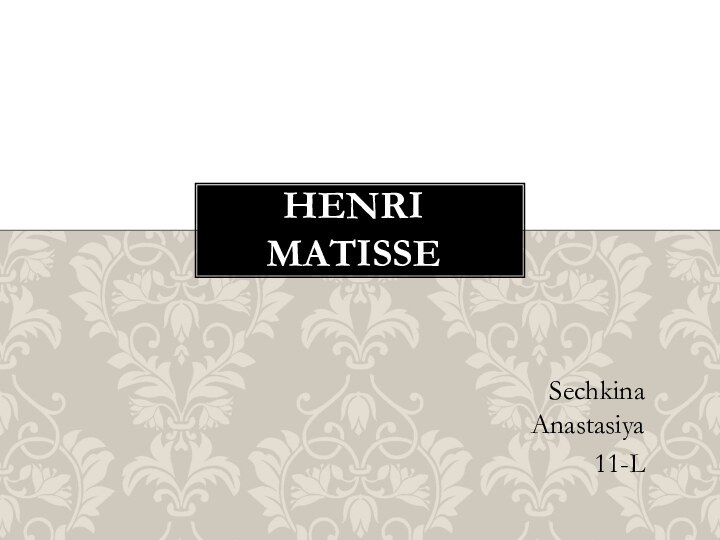








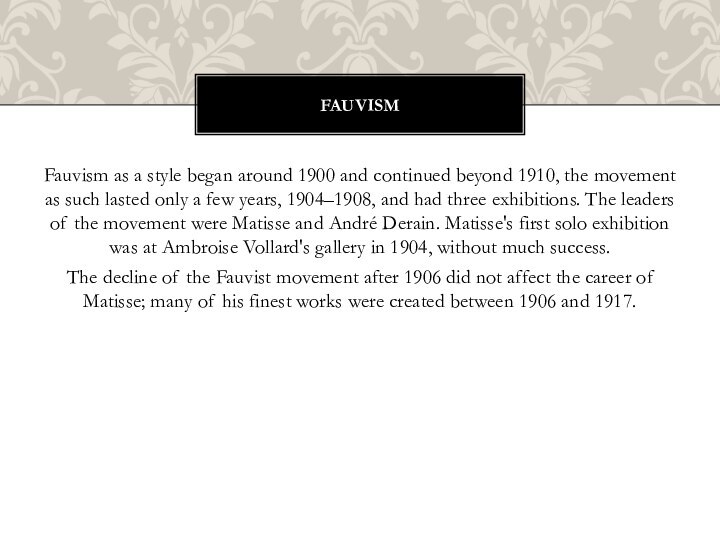

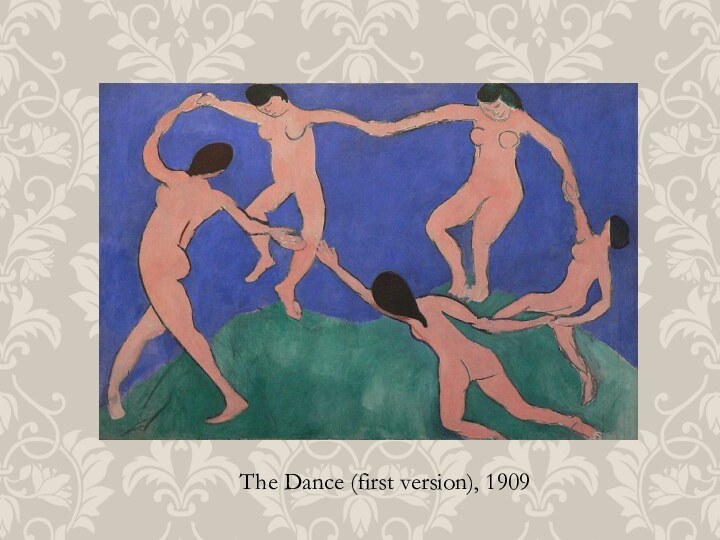

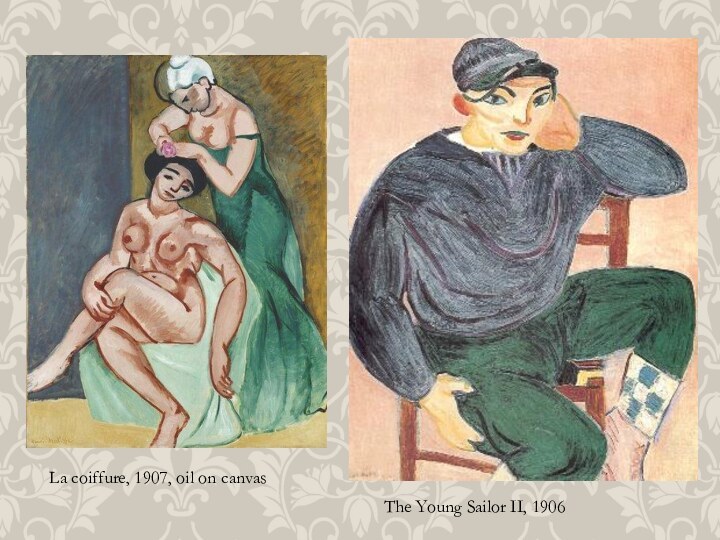









Слайд 3 Matisse was born in Le Cateau-Cambrésis, in the
Nord department in northern France, the oldest son of
a prosperous grain merchant. He grew up in Bohain-en-Vermandois, Picardie, France.In 1887 he went to Paris to study law, working as a court administrator in Le Cateau-Cambrésis after gaining his qualification. He first started to paint in 1889, after his mother brought him art supplies during a period of convalescence following an attack of appendicitis.
Initially he painted still-lifes and landscapes in a traditional style, at which he achieved reasonable proficiency.
Early life and education
Слайд 4 With the model Caroline Joblau, he had a
daughter, Marguerite, born in 1894. In 1898 he married
Amélie Noellie Parayre; the two raised Marguerite together and had two sons, Jean (born 1899) and Pierre (born 1900). Marguerite and Amélie often served as models for Matisse.Слайд 10 Fauvism as a style began around 1900 and
continued beyond 1910, the movement as such lasted only
a few years, 1904–1908, and had three exhibitions. The leaders of the movement were Matisse and André Derain. Matisse's first solo exhibition was at Ambroise Vollard's gallery in 1904, without much success.The decline of the Fauvist movement after 1906 did not affect the career of Matisse; many of his finest works were created between 1906 and 1917.
Fauvism
Слайд 11
Selected works: Paris, 1901–1910
A Glimpse of Notre-Dame in
the Late Afternoon, 1902
Madras Rouge, The Red Turba, 1907,
Слайд 16 Around April 1906 he met Pablo Picasso, who
was 11 years younger than Matisse. The two became
lifelong friends as well as rivals and are often compared; one key difference between them is that Matisse drew and painted from nature, while Picasso was much more inclined to work from imagination. The subjects painted most frequently by both artists were women and still life, with Matisse more likely to place his figures in fully realised interiors.Gertrude Stein, Académie Matisse, and the Cone sisters
Слайд 17
Selected works: Paris, 1910–1917
View of Notre-Dame, 1914
Auguste Pellerin
II, 1916-17, oil on canvas
Слайд 18
French Window at Collioure, 1914
Les poissons rouges (Interior
with a Goldfish Bowl), 1914, oil on canvas
Слайд 20 n 1917 Matisse relocated to Cimiez on the
French Riviera, a suburb of the city of Nice.
His work of the decade or so following this relocation shows a relaxation and a softening of his approach. This "return to order" is characteristic of much art of the post-World War I period, and can be compared with the neoclassicism of Picasso and Stravinsky, and the return to traditionalism of Derain.His orientalist odalisque paintings are characteristic of the period; while this work was popular, some contemporary critics found it shallow and decorative.
In the late 1920s Matisse once again engaged in active collaborations with other artists. He worked with not only Frenchmen, Dutch, Germans, and Spaniards, but also a few Americans and recent American immigrants.
After Paris
Слайд 21 He and his wife of 41 years separated
in 1939. In 1941, he underwent surgery in which
a colostomy was performed. Afterwards he started using a wheelchair, and until his death he was cared for by a Russian woman, Lydia Delektorskaya, formerly one of his models.In the 1940s he also worked as a graphic artist and produced black-and-white illustrations for several books and over one hundred original lithographs at the Mourlot Studios in Paris.
The war years
Слайд 22 In 1951 Matisse finished a four-year project of
designing the interior, the glass windows and the decorations
of the Chapelle du Rosaire de Vence, often referred to as the Matisse Chapel.Last years


























